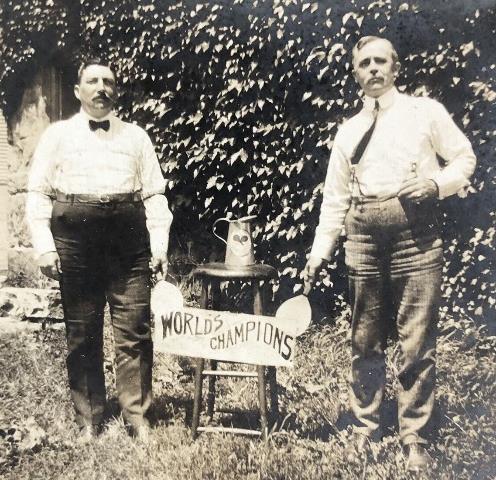TABLE TENNIS HISTORY
September 2023

The 1929 World Champion

September 2023

The 1929 World Champion
After contributing dozens of articles to Table Tennis Collector over the years, and joyfully so, I suddenly, unexpectedly, need an alternate way to publish my research. This publication is the happy solution
We kick it off with two surprising new table tennis discoveries from 1888 and 1894 that change the way we look at that era.
But the core of the initial editions of Table Tennis History will be a series called “100 Issues: Updates, Expansions, Corrections,” in which I spotlight the first 30 years of Table Tennis Collector, 1993-2023, now called Table Tennis History Journal. If you have enjoyed that magazine, you will find the “100 Issues” series illuminating, fun and important. Following the core article in this issue are five offshoot pieces on topics that merit deeper exploration.
I welcome any and all comments and article contributions. If you are not on our list for future issues, please give me your email address at https://pingpongfeverautho.wixsite.com/table-tennis-history .
Happy reading!
 Steve Grant
Steve Grant
On the cover: Fred Perry, the future Wimbledon champion, in the film TableTennisToday , shot in April 1928 by Ivor Montagu.

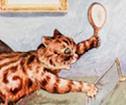



We know that celluloid balls entered table tennis in 1900, allowing the game to soar in popularity. James Gibb is often credited with this great innovation, bringing the balls from America. Yet somebody made the innovation six years before him.
Florence Mary Gardiner wrote a long column every month for the English magazine Ludgate Illustrated. It was called Whispers from the Woman’s World and was mostly about fashion; parts of these columns were soon collected into a fashion history book. But she also wrote about anything of interest and indeed made a career out of lecturing on sundry topics such as British furniture history.
In May 1894, Gardiner inserted this short note (right) in her column.
This is the first time we have seen celluloid (xylonite) connected with table tennis before 1900. The phrase about “great demand on board ship” is not believable, else we must certainly see more published references to this game, but maybe she knew of ONE ship?
Unfortunately, she chooses not to name the patentee in her column. I can find no patent for this game.

But I do have a good guess about its origin. The evidence is circumstantial, yet I think convincing:

There is another Table Tennis mention in 1894, also supposedly patented. In the ad at left, near the bottom, it is described as “A new and interesting Game.” The ad appeared in an 1894 book, Examples of Chess Master-Play, Second Series by Charles T. Blanshard, London.
Who would advertise sporting goods in a chess book? Therein lies an intriguing story connecting John Jaques & Son, chess, table tennis and celluloid.
We know Jaques as the maker of Gossima, the table tennis introduced in 1891, but of course the firm was then much better known for its other games. Notably, it had dominated the chess equipment business for decades.
Beginning in 1891, the upstart British Chess Company challenged Jaques’ chess dominance by bringing out new products at reduced price points. As one
observer put it, this “highly innovative rival burst upon the scene like a comet.” BCC was a great promoter of the game, freely loaning equipment to English tournaments and publishing many chess books, including an improved code of rules that became widely accepted and a national club directory. William Moffatt (1843-1918) and William Alfred Paley Hughes (1865-1936) were the men behind it, with offices at 247 High Holborn (a few doors down from Hamley; a ten-minute walk from Jaques) and then 118 Southampton Row (a few blocks further away) and manufactory at Stroud, a hundred miles west.
Chess pieces in those days were turned and hand-carved from wood, ivory and ebony. By far the most difficult and expensive piece to make was the knight because of the detail of the horse head, and every set had four knights. BCC found a new way to cut costs make the head from xylonite (right). The base remained wood. In their catalogs, they boasted about the beauty of their sets, while disparaging competition. For example, they said the competition knight looked like a “clumsy cart-horse.” The competitor was never named, but everyone knew they meant Jaques. This was a scathing insult because Jaques had always boasted about their knight being modeled upon the Elgin Marbles. Jaques fired back by saying they had the only true Staunton-style pieces and warning against imitations.

In July 1894, a newspaper noted that BCC “has assumed the additional title of the British Athletic Company, having undertaken the manufacture of materials for indoor and outdoor games.” BAC had actually already been producing games for a while. Railway News, Dec. 16, 1893, said, “Pay a visit to the British Athletic Company, 247, High Holborn, W.C., and see the new game of La Fosse, which is now ‘all the rage’ in some of the best country houses.” This invention was their miniature variation of billiards advertised as early as January 1892.
BCC was clearly obsessed with Jaques. The products in that BAC chess-book ad are surprisingly similar to the Jaques product line. In 1894, they found a way to challenge Jaques on a new front, their slow-selling Gossima. BCC had already used xylonite to grab chess business away. Now xylonite would again be the weapon of choice, I believe, through improved Table Tennis balls.
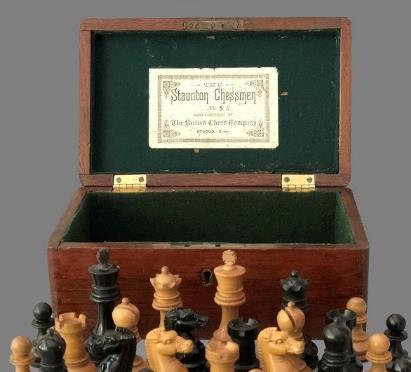
Florence Mary Gardiner mentions that Table Tennis is contained in a well-made box with lock and key. That would have been a natural feature for BCC, which produced the same for chess sets (left).
Miss Gardiner resided only five miles from BCC, in West Kensington, as of her 1896 patent application for fortune-telling cards. The Ludgate Illustrated office was an easy walk from BCC. But I have not been able to directly connect her with the firm or its principals.
If BCC had pushed Table Tennis in the right way, the craze could have occurred years earlier. A key question, though, is the quality of their xylonite balls. The balls may not have met the desirable parameters of roundness, bounce and weight. For example, the celluloid balls in the 1889-91 Peerless Parlor and Lawn Tennis set (Ping Pong Fever, page 201) would have been unsatisfactory, as also probably those in the 1891 Cup and Ball Tennis (Table Tennis Collector 49, page 4). See photos of these on the next page.
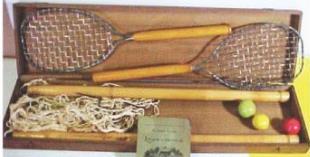
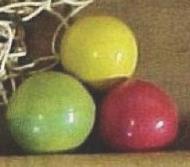

I found only the single ad for the Table Tennis of British Athletic Company, that chess-book ad. BAC did run many newspaper ads for its cricket bats in 1896, but unfortunately the firm liquidated in 1898. BCC soon stopped manufacturing chess sets, too.

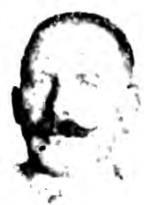
Co-founder William Moffatt continued publishing chess books and revising the rules code, marketed a travel chess set, started a monthly chess magazine and a chess correspondence league, and remained active in the Stroud Chess Club, which he had co-founded in 1889 with Hughes, his BCC cofounder. Hughes, who had been active in football, bicycling, cricket and ornithology clubs in the 1880s, focused more on chess after reaching his 30s and became a high-level player in his 40s, when he won numerous club and county chess championships, placed sixth in the 1910 national British championship, saw his games published in newspapers and magazines and achieved draws against the great Emmanuel Lasker and Henry Atkins.
What rumbled through the minds of Moffatt and Hughes in 1901 as they watched Jaques reap great rewards from Ping Pong? That, it seems, is not recorded.
When I first came across Miss Gardiner’s astonishing Table Tennis report, it sounded so much like 1901-02, especially the “great demand on board ship,” that I double- and triple-checked the 1894 date. I got further confirmation of the date when I learned that I was not the first to discover this item. Indeed, the column below beat me to it by 121 years...from the Worthing Gazette, March 12, 1902...
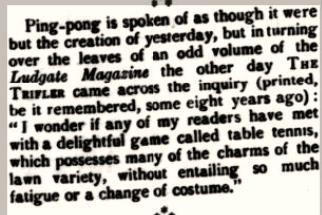

There was a statement in Table Tennis Collector some years ago that, “It is well known now that the first appearance of an action game of tennis on a table is the David Foster...England 1890.” Do we really KNOW that? I recently came across 1888 U.S. articles about a game played on a “tennis-table” with rackets and balls...


Freeport (IL) Journal-Std., Jan. 21, 1888

This sounds like a possibly commercially produced game, but we have no other information. I picture something like this 1936 “Babo-Ten” game but with smaller rackets...
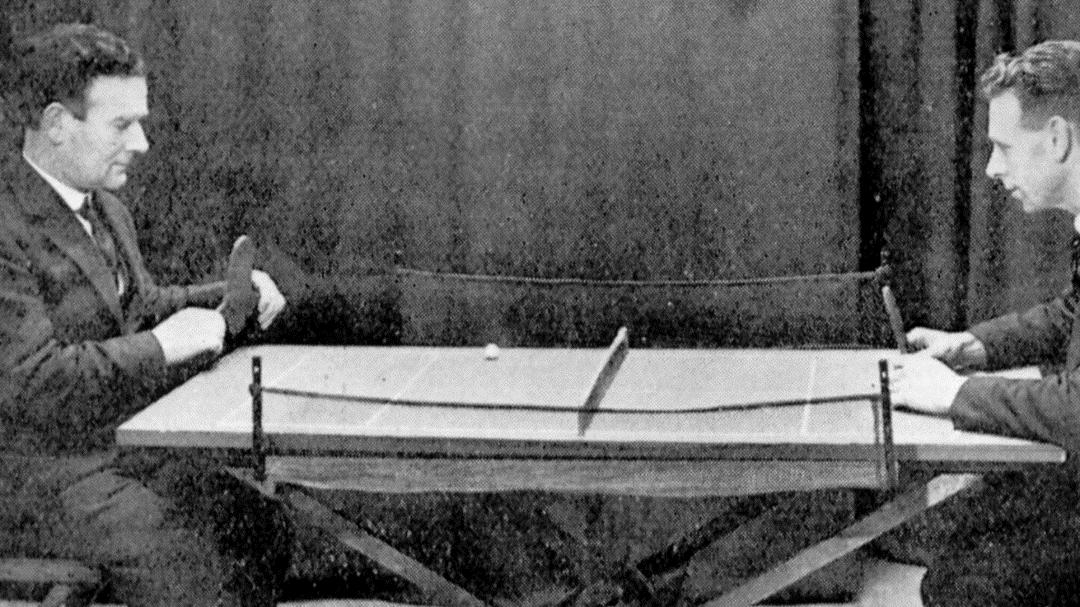
Given the timing and the name, I suspect it derived from a Progressive Lawn Tennis game with cards created a few months earlier by a 29year-old Dayton, Ohio man, Lewis Gardner Reynolds (1858-1940). He used tiny nets on tables, though I think no rackets or balls.


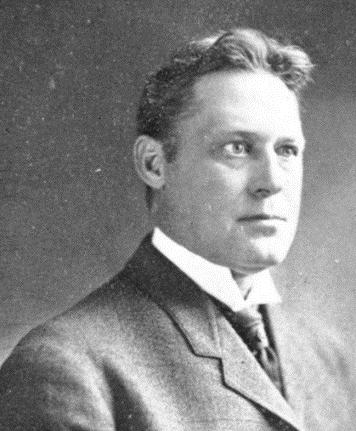
At the time, Lew (left) was working for his father Lucius D. Reynolds (right, 1835-1913), who helped him market the game. Their November 1887 ad in Life magazine (below) does not mention a net. It said the game was “invented by a lover of the lawn game to continue the sport into the winter season.” The advertiser, Reynolds & Reynolds, was a forms printer begun in 1866 that is still around today. Lew patented numerous business-forms products beginning in the 1880s, but I find no patents for games.


There was at least one other card tennis game at this time. It was only natural that some players thought, “We have this tennis on a table, so why not take it to the next level with little rackets and balls?”

Our knowledge of table tennis history is continually growing. Table Tennis History Journal has been the driving force behind that for thirty years. Early on, we knew little about even basic history…. when table tennis first became a commercial product, when the game adopted the celluloid ball... and innumerable details about the decades to come.
Reaching the 100th issue of TTHJ is a good time to look back and update articles, expand on certain topics and correct errors. I intend this not only as a stand-alone project but also as an aid for future readers of back issues, both the casual reader and the historian. Those back issues can all be seen at https://www.ittf.com/history/documents/journals/ .
Issue 1. ***Page 12. Editor Gerald Gurney writes about Louis Wain, the most popular British commercial artist of his time, and shows some of Wain’s cat ping pong artwork. He promises more pages from Wain’s 1902 Ping Pong book in future issues. Now, 100 issues later, we fulfill that promise and more on page 28.

Issue 4. ***Page 5. The 1902 weekly publication Table Tennis and Pastimes Pioneer is discussed, with extracts reprinted in this and subsequent issues. Today all nine issues can be read in full at https://www.ittf.com/history/documents/table-tennis-magazine/ . An article in Issue 67, page 11, uncovers the identity of the publisher and the probable reason for the magazine’s abrupt demise.
Issue 5. ***Page 14. An article about Arnold Parker requests information about the different versions of his 1902 book. This was later answered in two separate articles that, by sheer coincidence, each landed in Issue 71. The article by our colleague Jorge Arango is an excellent survey of the various Parker editions and printings. The article by me dives into the details of certain editions, especially an odd version published by Ogilvie that is an illuminating example of how Parker Brothers attempted to dominate the U.S. table tennis market. It also answers Editor Gurney’s Issue 5 question about copyright laws of the time, or more accurately their absence.
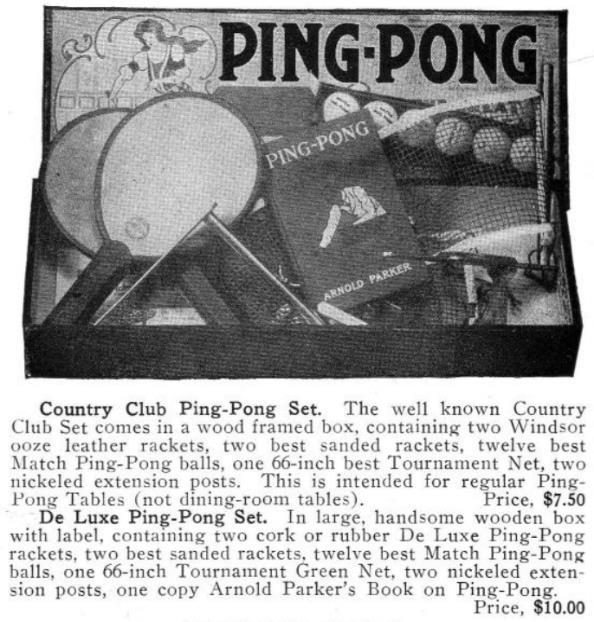
At left is the book, apparently the Fenno version, included in a Parker Brothers set. What year would you guess this set was from? The girl and the book both debuted in 1902, but this is the De Luxe Set seen in the Parker 1914 through 1922 catalogs. They did use the identical photo in 1902 ads, but then it was called the Windsor De Luxe Set, for $8.00. That set, the book and the photo had a 20-year life!
Mr. Gurney tells us that the book’s original contract, which found its way to the E.T.T.A. archives, is dated January 7, 1902, with a tentative title of A Manual on How to Play Ping-Pong. The next day, January 8, we find this ad in the Westminster Gazette from publisher Unwin...

Gurney provides a short bio of Parker (1877-1954), which our colleague Alan Duke supplements in Issues 67 and 97.
Before leaving Arnold Parker...The drawing below, from Table Tennis and Pastimes Pioneer, Feb. 15, 1902, depicts a scene from the big February tournament at the Royal Aquarium. That is Parker pictured on the wall. Next to him may be George Greville, who beat Parker 2-0 at that venue in the finals of the January 11 national championship.
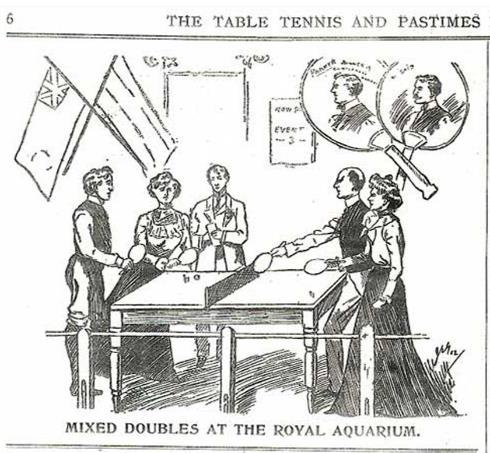

And here is Mr. Parker as seen in the February 1948 E.T.T.A. magazine...
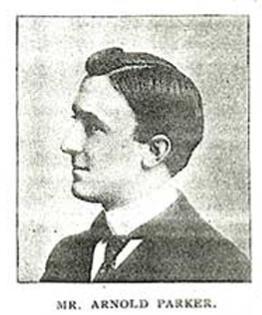
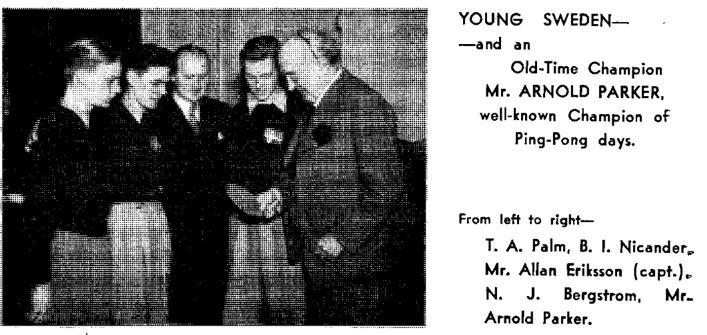
Issue 6. ***Page 3. A short article about early Hungarian table tennis history mentions only the first champion, Bela Redlich in 1905, so here are the other early Hungarian winners....
Singles
1906 Jozsef Tolnai
1907 Laszlo Albert
Doubles
1908 Laszlo Albert Laszlo Albert/Dezso Freund
1909 Roland Jacobi Roland Jacobi/Frigyes Becske
1910 Roland Jacobi Roland Jacobi/Zoltan Mechlovits
1911 Zoltan Mechlovits Roland Jacobi/Zoltan Mechlovits
1912 Daniel Pecsi Zoltan Szekely/Gusztav Nadasi
Jacobi was 16 when he won his first Hungarian national titles in 1909, and 33 when he won the first-ever world championship in 1926 in both singles and doubles. Pecsi was about 17 when he won the Hungarian title and 31 when he won 1926 world doubles with Jacobi. Mechlovits was 19 or 20 when he won Hungarian singles, and 36 when he won world singles in 1928. In other words, these guys were OLD when they won their world titles...and crucially in such a young, evolving sport, EXPERIENCED. Passing on their knowledge to the next generation helped extend the Hungarian dynasty well into the 1930s.


Issue 7. ***Page 4. Shows a rare Rowntree’s ping pong biscuit label (left), without comment.
Issue 48, page 4, in 2008 reported that a biscuit tin with that label in an eBay auction, below, 8.5 inches tall, went to a rogue post-auction bidder for 350 pounds.

Update: In 2015, the example at right went for 65 pounds in a British auction (but double that after adding commission and shipping).

Issue 8. ***Page 2. A short article discusses the early history of table tennis in Japan. For more on that topic, see When Ping Pong Came to Asia, Part 1, Issue 58, page 8. Update: I recently found a review of Arnold Parker’s book in the March 15, 1902, issue of the Japan Weekly Mail, stating that the book “should prove of value even to local adepts and there are many in Yokohama already...”
The Issue 8 history ends at 1927, so here is a supplement, published in August 1936 English papers...


Issue 9. ***Page 2. Shows a Ping Pong Fan (below), with local business advertising on the back. Described as very rare and later, in Issue 25, as immensely rare. Not so much, as it turned out. This fan and its variations still appear on eBay from time to time, and go for perhaps $20 to $120. They were among various promotional tools that the Continental Calendar Company offered to small local businesses. This ad appeared many times in newspapers around the U.S. in 1904…

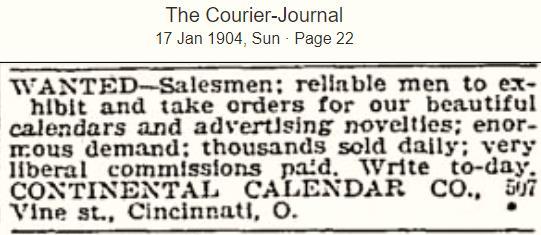
This store (right) was probably one of their clients... April 5, 1905, Washington (D.C.) Times
A Continental Calendar, presumably the same company but now located in Chicago instead of Cincinnati, was seeking salesmen in 1952.

Issue 9. ***Page 4. Shows photo of the national English team on the occasion of their first international match, versus Wales in 1923. In Issue 67, our colleague John Ruderham tells us that the names of Hollingsworth and Belsten were mistakenly switched in the description.
Issue 9. ***Page 5. Shows this 1901 caveman cartoon and seeks the identity of the artist. Our colleague David L. Good provided the answer in Issue 30, in his lengthy list of Punch magazine ping pong mentions. The artist was Edward Tennyson Reed (1860-1933), whose earlier caveman cartoons were collected in an 1896 book, Prehistoric Peeps. A four-minute film by the same name was made in 1905, the first film to show dinosaurs.
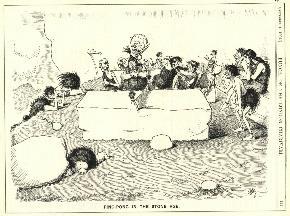
One hundred years later, evolution brought improvement in the caveman game. From the New Yorker magazine, July 29, 2002, by Mort Gerberg...

Issue 9. ***Page 7. Editor Gurney shows the Table Tennis and Pastimes Pioneer issue of March 1, 1902, and adds an asterisk next to the March 8 Woodford event in the tournament schedule (right) …

In Issue 69, page 31, we see a photo of a trophy that fits this description, which went for 450 pounds at a 2013 Graham Budd auction. In Issue 98, page 77, our colleague Fabio Marcotulli shows better photos of the trophy in his collection (below). It seems to be a repurposed lawn tennis trophy.

The engraved date is simply “1902,” and since Hawkey won Woodford tournaments in both March and May, we don’t know which one this is from. We do know that in the March tournament he had easy wins in both the semifinal 20-10, 20-6 and the final 20-17, 20-12. He then beat ladies champion Miss Ballard in an exhibition. (In late 1901, by the way, Hawkey was on a six-gentlemen team that played a match versus a six-ladies team, won by the more experienced men rather easily.) At the awards ceremony, those thanked by Hawkey included “the spectators for giving the competitors room to play.” One article described Hawkey as “a remarkably fast player, his upper cut stroke being practically untakable, but, this being a very difficult stroke, it is a doubtful point whether he gains much by using the same.” He was more than just a local champ. In the big January 1903 open tournament at East Dulwich, Hawkey won his section by beating top players such as Donald Bromfield and F. Good. The next month, he again won his section at the important Crystal Palace open. He was certainly athletic: In March 1902, he played half-back in a local football match and made “a well-placed corner” to set up a goal, and in the next few years was often in the newspaper for his cricket play.
Issue 10. ***Page 14. Discusses the only known David Foster 1891 set (at the time, but Issue 74 disclosed a second set): “No laws survive, but service was almost certainly direct over the net and scoring as in lawn tennis, with volleying not allowed.” The laws have since been found (Issue 80) and Rule 2 (right) states, “Ordinary Tennis rules shall be observed,” which must therefore include volleying.

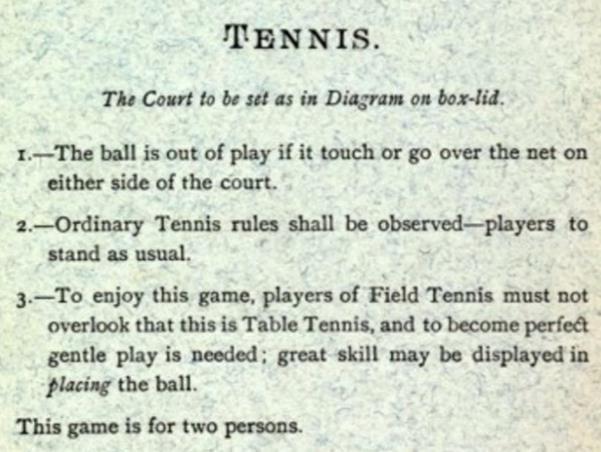
Issue 11. ***Page 7. Shows autographed program from a China vs. England match, without elaboration (right).
See “B-Team Tour, 1959” on page 23 to learn how this match was part of an important European tour by the very young Chinese players, led by future greats of the 1960s.
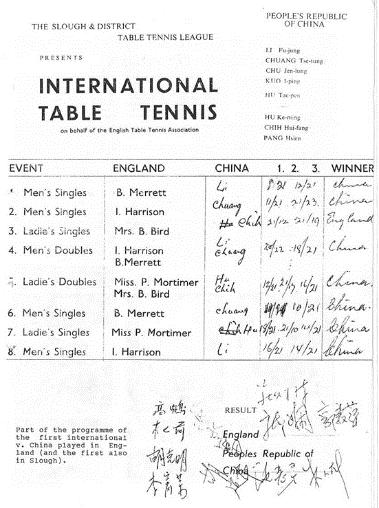
Issue 11. ***Last page. Shows another caveman cartoon (below), without identification. This was from Pearson’s Magazine, December 1902, by London-born Clarence Lawson Wood (1878-1957). It illustrated a story by Fox Russell called Prehistoric Picnic. Below is the ping pong part of that story:

Wood produced a book in 1907 called Prehistoric Proverbs and was later well-known for his monkey cartoons and children’s books.

Issue 12. ***Page 4. The editor asks, Can anyone explain the meaning of this political cartoon (at right)?
The cartoon doesn’t fully make sense to me, but I will bravely give it a try. It refers to the Anglo-Japanese Alliance signed in January 1902, motivated mainly by their common desire to stem Russian expansion in Asia. John Bull is ending Britain’s period of isolation. Normally, one would place the bat on the table; by dropping it on the floor and rolling up his sleeves, he shows that the fun and games are truly over.
The alliance had the side effect of promoting cultural exchange between the two nations, no doubt boosting the introduction of table tennis to Japan.
The cartoonist is Arthur Jacob Lyons (1873-1948), who was also a painter. He did the cover cartoon of the previous week’s Pioneer,
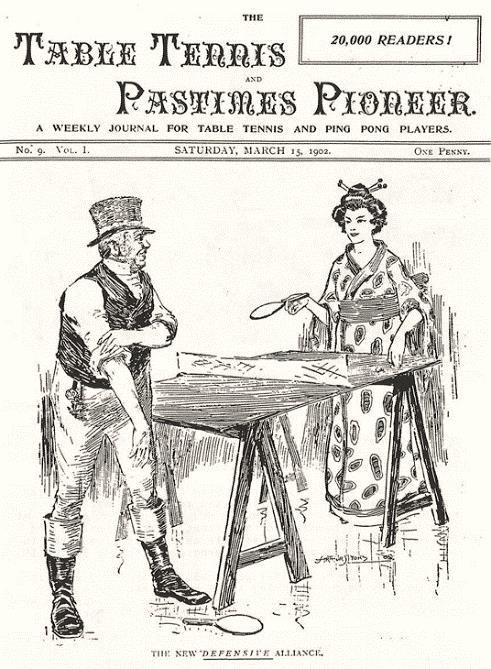
Issue 12. ***Page 6. Philatelist Anton Zweibel rues the absence of any table tennis stamp issuance by his home country, Holland, and suggests paths to correcting that. See Issue 18, bottom of page 14, two years later, for discussion about a controversial Dutch novelty issue.
Question and article suggestion for philatelists (since I am not one, notwithstanding that I still have my childhood collection): How would the late Mr. Zweibel feel about the Holland situation today, and what countries have paid the most postal attention to our sport?
Issue 13. ***Page 4. Asks about a curved bat, the Slazenger Chiswick. An example can be seen in Issue 18, page 9, in Graham Trimming’s collection.
Issue 13. ***Page 4. Reprints a 1950 tribute to English table tennis pioneer Alfred James Wilmott (1888-1950), known in part for his 1930s testing of table tennis balls. The editor asks for information about the artist of the Wilmott caricature shown at right. Answer: Henry Coller (18861958), successful commercial artist, prolific magazine illustrator 1914 to 1939 and sports card series illustrator 1928 to 1934.

More interesting is Wilmott himself, an accomplished pianist and violinist who also played football, cricket and billiards. But he was far and away best known for his work as a botanist. His portrait (left), c. 1925, hangs in the British Herbarium, which he once headed at the Natural History Museum in London.

Issue 15. ***Page 8. Issue 7 reprints the Fred Perry obituary from ITTF Digest, which includes the incorrect statement that his last table tennis competition was in 1932. In Issue 14, the Editor requests information about Perry’s table tennis record. Then in Issue 15, we learn much about Perry, but the Editor asks how he came to play in a 1932 international match against Hungary. For the answer and for the surprising story of the length and breadth of Perry’s table tennis life, see “A Lover of Table Tennis” on page 17.
Issue 22. ***Page 6. Our colleague Alan Duke presents Table Tennis Music. This is updated in Issues 29, 30, 31, 49, 52, 56, 61, 73, 83, and 95.
At right, Chicago ad from May 1902.

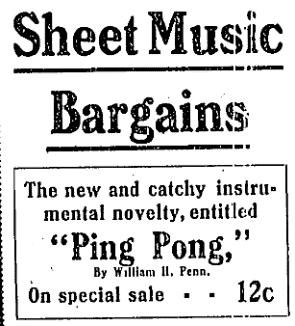
Issue 25. ***Page 6. Shows a bat on which results of India vs Wales, March 26, 1927, at Cardiff are written, but much is illegible. Asks if this was an official international match, and who won. For the answers and for more history of the Welsh international matches of the 1920s, see page 35
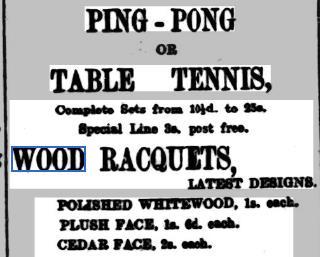
Issue 26. ***Page 3. Our colleague Michael Thomson provides a close reading of the October 1901 Windsor magazine article by Walter Harrison, which had been shown in Issue 23. Michael points out that the article states that only vellum or strung racquets were in use, meaning no wood bats at that time. The switch to wood, it seems, came rather suddenly. The Woottons registered their wood racquet design (sandpaper-covered), the Vulliamy, on November 1, 1901, as our colleague Alan Duke showed in Issue 65. At left is the earliest ad I have found for wood racquets, November 25, 1901, East Anglia Times. Yet by the time of the big December tournaments in London, it appears that wood, either covered or uncovered, had quickly become the most popular.
Issue 28. ***Page 7. Shows this printing of Arnold Parker’s book whose cover states “Headquarters” and “Abraham & Strauss.” Editor Graham Trimming writes, “The reference to Abraham & Strauss is a mystery.”

A&S, a major department store in Brooklyn, New York, was a big promoter of table tennis. Its newspaper ad in November 1901 read, “It is a new game to America, but England has gone wild over it for many months...Now we have turned the Golf School into an exhibition room and two young people are busily playing the game just to show what a very real fascination it has...Everybody will be playing it in Brooklyn this Winter for we are a good deal like our English cousins...” See Chapter 20 in Ping Pong Fever (left).

Issue 29. ***Page 12. Philatelic section shows a German cover imprinted with a history of table tennis. The entry for 1878 states this was the year of the first use of the term Ping-Pong on an English postcard. Even if true, it would have been unrelated to table tennis, which was not associated with that term until 1900. The next entry states that in 1891 James Gibb first used celluloid balls from America for table tennis. Even if partially true, it took place in 1900, not 1891.
Issue 29. ***Page 14. In an article about Stephen Kelen, we are shown a 1937 letter written from London by Gilbert Marshall. The editor asks for help in identifying the “Bill” to whom the letter was addressed. Marshall was on the U.S. team in 1935, even though he was living at that time in England (one might better say because he was living in England, making him a low-cost, convenient choice for the world championships there). One of his teammates was USTTA president Bill Stewart (the others being Jimmy McClure and Sol Schiff, later the 1938 world doubles gold medalists). My best guess is that he is the “Bill” addressed in the letter, which is clearly written to an American.
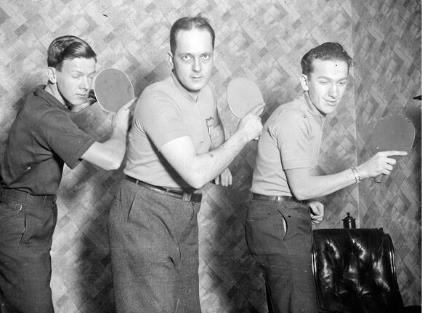
Issue 30. ***Page 4. Our colleague David L. Good produces a listing of 90 ping pong and table tennis mentions in Punch magazine in the years 1900-1905 and asks for a volunteer to compile a similar list for the 1920s comeback era. I volunteer. Well, halfway. See page 39.
In Issue 15 of Table Tennis Collector, editor Gerald Gurney shows us a list of Fred Perry’s numerous table tennis accomplishments in 1927-1931, with the highlight of course being his world singles championship in January 1929.
He then quotes Perry’s autobiography: “I only ever played the game seriously once after becoming world champion in 1932...England had a match against Hungary...in London and they wanted me to play. So I practised for three days beforehand and got a bad case of wrist tendon inflammation...After that I devoted myself to tennis.”
Perry’s memory was playing tricks on him. The international against Hungary was in 1933, not 1932. As for his statement that he only once played the game seriously after Jan. 1929, that was far from true.
Mr. Gurney: “It seems astonishing that Perry who cannot have been in proper training entered for the English Open [table tennis] as late as 1932-33 [Feb. 1933], and even more astonishing that he then played in the consolation event. [Gurney had recently acquired the medal that Perry won in this event.] And can anyone explain how he came to be selected for the international against Hungary?”
That is a fair question, since Frederick John Perry (1909-1995) was already winning important lawn tennis tournaments in 1929 and 1930, and even more so in 1931 and 1932, before ranking as World No. 1 in 1933. Why bother with table tennis? For that matter, why would the selection committee bother with him, an inactive player?
Perry’s love affair with table tennis began as a lad in the early 1920s. This is from a BBC interview he did in 1961, which you can hear at archive.org....
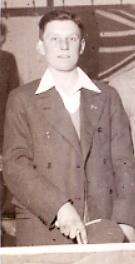
“I used to push the kitchen table up against the wall at night and practice by the hour, because I always felt you could learn a lot about it that way. I mean the racket became a part of my hand and you knew all the spins and counterspins and things. One thing was quite certain: that every time the ball hit the wall it was coming back. If anybody was going to miss the ball you were. Of course I drove everybody crazy [with the noise].”
Oct. 1925 *** Wins a local Brentham table tennis tournament.
April 1926 *** Wins YMCA table tennis tournament.
1927 *** Numerous successes in both table tennis and junior lawn tennis. Gurney quotes the 193839 English Table Tennis Handbook as saying Perry was runner-up to Suppiah in the 1927 English Open. That is wrong. Suppiah actually beat Bernstein in the championship finals, not Perry, who was runner-up to Burris in a lesser singles event at that tournament.
January 1928 *** Named to the English Swaythling team, as were two other teenagers, Charlie Bull and Adrian Haydon. Their highlight in Stockholm is a shocking 72 win over mighty Hungary, Perry beating both Jacobi and Mechlovits. England takes bronze (not fourth place as quoted from that 1938-39 Handbook). In doubles, Perry/Bull take silver. In singles, Perry and Haydon each make the quarterfinals.

February 1928 *** Makes quarterfinals at German national championships and finals in doubles.
January 1929 *** Wins world singles title over Szabados, losing only one game along the way.
Nov 29, 1929 *** Perry, age 20, apparently makes a badminton joke that the Belfast Examiner writer takes seriously....

December 1929 *** Wins City of London table tennis title.
January 1930 *** Perry’s mother dies and he withdraws from the world table tennis championships.
1930 *** Perry’s father allows him to quit his job to try concentrating on tennis for one year. The tennis year is very successful.
March 1930 *** Triple winner in the Middlesex table tennis tournament.

March 10, 1931 *** Loses to Barna 3-1 in an England vs. Hungary exhibition match.
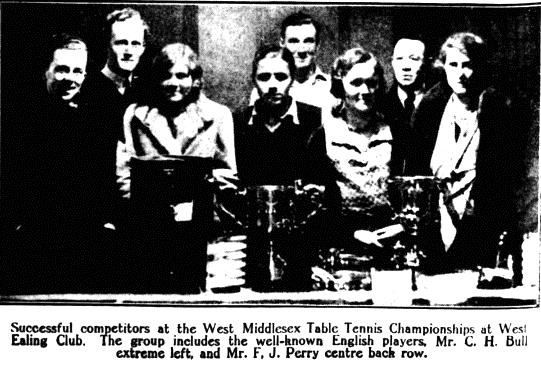
March 1931 *** Triple winner in the West Middlesex table tennis tournament singles, doubles and mixed. Other medalists shown at left include Percy Bromfield (2nd from right) and Percy’s daughter Val (3rd from right), who was Perry’s mixed doubles partner and the women’s champ.

Dec. 20, 1931 *** After a long table tennis layoff, wins the French singles title over world champion Szabados 19, 18, 21. On the same visit, wins three French tennis tournaments.
Jan. 18-20, 1932 *** Though not on the English team, Perry helps prepare them for the world championships, and they do exhibitions at the Selfridges store (left) and several clubs. Below, Perry and Adrian Haydon are with the South African Rugger Team, according to The Bystander, Jan. 27.
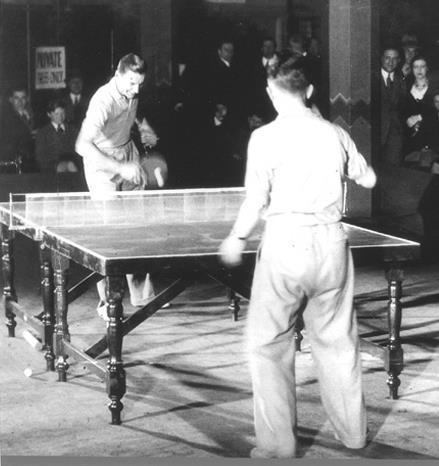

March 22, 1932 *** In a national table tennis tournament sponsored by Sunday Referee (below), loses to David Jones in the final. This followed tennis matches two days earlier in Paris against top French players, which itself was after ten days at sea coming from Bermuda tennis.
April 6, 1932 *** In a London exhibition, loses twice to David Jones. Also plays for Old Ealing team and beats Alec Brook.
July 1932 *** When the Brazil Revolution erupts outside his window In Sao Paulo, Perry’s tennis matches are cancelled. So instead he plays the Brazilian table tennis champion, result unknown.

Nov. 1, 1932 *** Plays for West Eling in a London League match, going 5-0 against a Wimbledon team that includes Wilmott and Findon. Fellow West Ealing members Brook and Jones will soon be on the Swaythling team, pictured at left
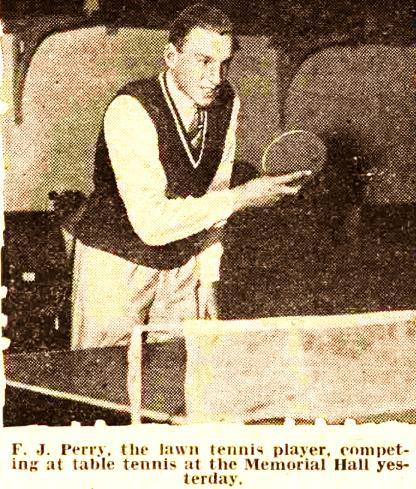
Feb. 17, 1933 *** Plays against Continental all-stars in exhibition, losing to Barna in both singles (19,11,16) and doubles.
Feb. 19, 1933 *** In English Open, beats French champion Raymond Verger 16,16,14 but loses to Don Foulis of Liverpool 3-2 in the 2nd round, then wins consolation.
Feb. 22, 1933 *** Ealing team loses to Continental all-stars 8-1. Perry loses to Barna (-19,15,11) and Glancz but beats Liebster.
Feb. 23, 1933 *** “I am resting from lawn tennis... When I return from table tennis on March 23, I will have week or ten days hard practice to get ready for the tennis season.” Perry is referring to a planned three-week table tennis trip with the Hungarians to tournaments and exhibitions in Paris and Budapest.
Feb. 27, 1933 *** An English team (Jones, Perry, Haydon) is scheduled for exhibition against Hungary in London, but Perry withdraws due to forearm tendon injury. He acts as umpire instead, with a strapped arm, also watching some matches alongside Ivor Montagu. The injury forces his withdrawal from the March trip, too.
“It is probably due to taking up table tennis again and the unaccustomed use of certain muscles. I am very disappointed, as I wanted to play more table tennis. I believe it is very good training for lawn tennis, especially for volleying.”
1933 through 1936 *** Leads Great Britain to four straight Davis Cup championships.
Sept. 1933 *** Wins U.S. tennis championship.
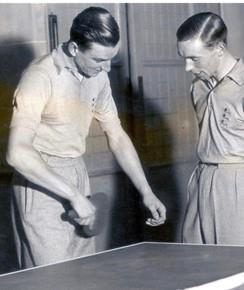
Nov. 1933 *** Plays table tennis during a tennis tour of New Zealand, below.

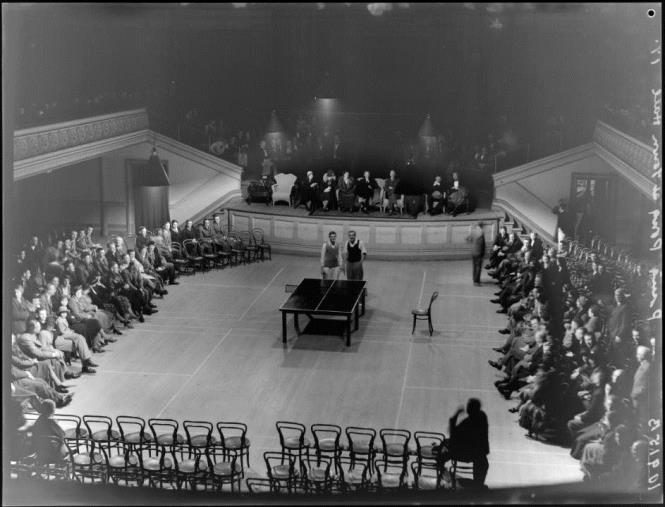
Jan. 1934 *** Wins Australian tennis championship.
Feb. 7, 1934 *** Frank Wilde, a teammate on the 1929 English Swaythling team and later the Davis Cup team, joins Perry for table tennis in Adelaide against South Australian players. It was arranged at the last minute with only two days’ publicity, yet 900 fans attended. Perry and Wilde won six of the eight matches.
Feb. 20, 1934 *** “Queensland wanted Perry to meet their table tennis champion, W. Weston, but Perry declined, saying, ‘If I play in Queensland, I shall have to do likewise in Melbourne, Sydney and other centres, and I cannot possibly spare the time. Furthermore, I cannot concentrate on two games.’”
Grimsby Telegraph.
April 7, 1934 *** Plays a table tennis exhibition at the West Ealing club.

July 7, 1934
April 12, 1934 *** Loses to M.B.W. Bergl, 17, in an Epping table tennis exhibition.
July 1934 *** Wins Wimbledon.
Aug. 29, 1934 *** Plays in a table tennis tournament at the Westchester Country Club in Rye, New York.
Sept. 1934 *** Wins U.S. tennis championship.
Perry "screwed up men's tennis in England, although this wasn't his fault. The way Kramer.
June 1935 *** Wins French tennis championship.
July 1935 *** Wins Wimbledon.
Jan. 28-Feb. 1, 1936 *** Sits on the tournament committee of Middlesex table tennis tournament and presents the trophies. Perry is at right in this photo.

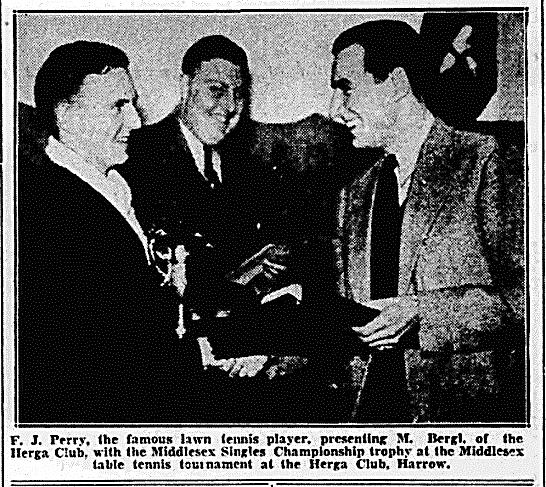
Feb. 7, 1936 *** Does radio broadcast for English Open table tennis semifinals. Says he now plays only on ships or South Sea islands. Perry later made a career out of broadcasting.
“...The amount of money that [Perry’s tennis doubles partner] Pat Hughes has made out of backing him at table tennis is nobody’s business. Which brings me to a point that only [tennis star] Elizabeth Ryan has discovered about the Champ that he has introduced two table tennis strokes to lawn tennis that have completely revolutionised the game. One of them is a backhand volley played from the right-hand side of the body. The other is a forehand drive that goes unexpectedly into the lefthand court instead of diagonally into the right-hand court.” The Bystander, July 1935.




At right, March 1939, Perry seeks to combine his two favorite sports, as fellow tennis great Donald Budge patiently plays along. The result was unsatisfactory.
I think we can now answer those questions posed in Issue 15: Why did Perry keep playing table tennis, and why was he selected to play in exhibitions?
1. He loved table tennis.
2. He enjoyed the table tennis friendships and camaraderie.
3. Table tennis benefited his tennis skills.
4. He loved table tennis.


5. He remained a top player for six years, world class in two sports simultaneously.
6. He really loved table tennis.
In Table Tennis Collector Issue 11, page 7, our colleague Graham Trimming contributed a 1959 scorecard of an England vs. China match, without elaboration.
Top half of scorecard...
I wanted to know more!
Here is what I learned:
China entered the world table tennis stage in the early 1950s and quickly made good progress. Its first world-ranked player was Chiang Yung-ning in January 1957, number 11 among world men. Later that year he fell off the list, but Wang Chuan Yao and Fu Chi-fang made the top 11. At the 1959 world championships, the seedings had Wang at number 4 and Jung Kuo Tuan number 5. Jung became number 1 when he won the world championship in March, while three other Chinese men made the top 20.


Among women, Sun Mei Ying was ranked 7th in the world in late 1957. In 1959, she was seeded 8th for the worlds and Chiu Chung-hui 5th, and they retained high rankings after the worlds.
China took bronze in the Swaythling in 1959 for the third straight time and in the Corbillon for the second straight time. They had certainly arrived. But they aimed to do better.
Later in 1959, China decided to send a team on European tour. But the team included none of the above-named players or bronze medalists. The leader, Tu Chien, explained, “We consider this our second-best team. Our players are young and all promising, and we have brought them to Europe to gain experience.” The five chosen men were all teenagers, and the three women were 18 to 22.
They may have been the B team, but three members had just scored impressive wins at the Chinese national championships in September 1959. In an early round, Li Fu-jung, a 17-year-old Shanghai student, defeated world champion Jung. Chuang Tse-tung, 19, won mixed doubles and paired with Wang to make the finals of men’s doubles. Hu Ke-ming, 18, won the national women’s title.

These young players must have been quite excited when they set off to see Europe and test their skills. A big part of this tour would be a whirlwind of matches in various English locations.
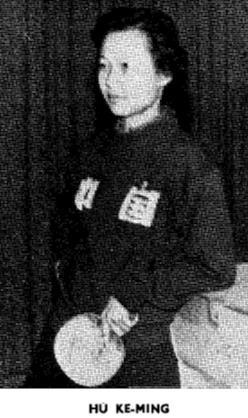
But first came the Hungarian Open in Budapest, ending November 15. Li and Chuang, both unranked internationally, were relatively unknown. That soon changed. In singles, Li had a deuce in the 5th win over Vilim Harangozo of Yugoslavia, 34, ranked 9th in the world. Chuang beat a top-20 player, Tony Larsson of Sweden, and then beat Li 3-1 in the semifinal. In the final, Chuang put up a terrific battle against the Hungarian Zoltan Berczik, 22, who had been the top seed at the worlds earlier in the year and was now ranked 5th in the world. Victor Barna was there and wrote, “It must be many years since spectators enjoyed thrilling games such as the finals provided.” Berczik won in five games. To top it all off, Li and Chuang won men’s doubles.
The next day, November 16, it was off to London. This was said to be the first time that China had sent a sports team of any kind to Britain.
The British unfortunately had no highly ranked players among their men. Their number 1, Ian Harrison, 20, would make top-25 two years later. He was an excellent defender who had added some offense to his armory. The English number two, Brian Kennedy, was unavailable due to business commitments.
Harrison played in all six matches against the Chinese. Bryan Merrett, 24, his Gloucester teammate, played in the first three, and in the last three that spot was alternately taken by Laurie Landry, 20, Alan Rhodes, 27, and Derek Burridge, 26, each from Middlesex.

These two photos are from the 1961 world championships in China, courtesy of the collection of former English international Jeff Ingber...

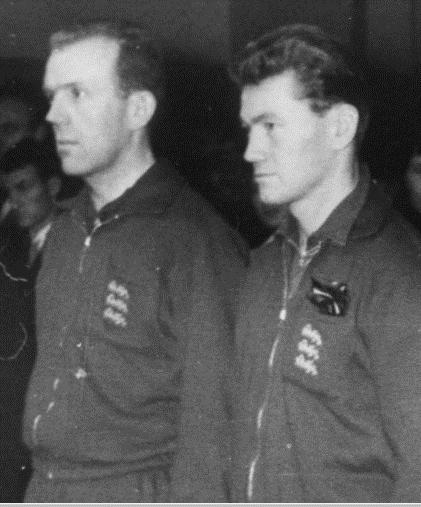
England had hoped to have world 5th-ranked Ann Haydon on the team, but she withdrew on turning 21 in October, declaring her intention to concentrate on another sport where she was top ten, tennis. Diane Rowe, 26, who still had a few more years left in the top 20, was available for three of the matches. The other women chosen were Betty Bird, 24; Pam Mortimer, 26; and Kathleen Best, 26. All these women except Bird had been on England’s Corbillon team earlier in the year.
So England was missing one top player on both the men’s side and the women’s, while facing youngsters who were fast rising into world class. Led by non-playing captain Ron Crayden, the team faced a tough challenge.
The Chinese penholder serves gave England a lot of trouble the surprising sidespin, the kicking topspin, the disguised backspin. With time, the English were able to adjust, but the reserves who played only a single match had no time to gain experience. Meanwhile, the Chinese forehand attack was relentless. Perhaps the English defensive style and chopping took some getting used to for the Chinese, but their experience at that earlier Budapest tournament had been helpful.
November 16. Chinese arrive at London airport, a 12person group that includes a trainer and an interpreter.
November 17. The Chinese play a match with their embassy staff in London.
November 18. Keen on the game of soccer in China, the men attend the England vs Ireland match.
November 19. Travel to Slough, 20 miles west of London, for the first of the six scheduled matches. China wins 7-1 in front of a sold-out crowd. Below is from that match scorecard in Issue 11...

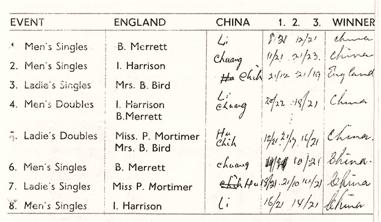
November 20. Travel 90 miles to dinner at Summer Palace in Eastbourne on the English south coast, where the team presents an artistic scroll to the deputy mayor (right). The Formosan restaurant owner is quoted in the newspaper as saying, “I regard this [restaurant visit] purely as a business proposition.”


November 21. The match at nearby Hastings is a 4-4 draw. Diane Rowe joins the team and the English women win all three of their matches. China uses two reserves in the contest, only salvaging the draw in the final match when Li beats Harrison 15, 18.
November 22-23. Travel 120 miles to Oxford, where England wins both doubles matches, but China wins the contest 5-3.
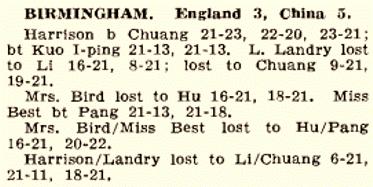

November 24. Travel 75 miles to Birmingham. Harrison wins both his singles matches, wearing down Chuang -21, 20, 21 and then beating the only shakehands player on the team, Kuo I-ping 13, 13. But China again wins 5-3.
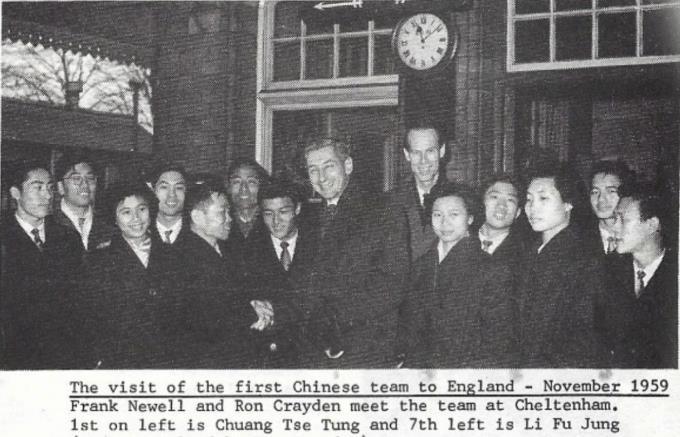
November 25. Head back south again, 50 miles to Cheltenham. Diane Rowe scores victories in singles and doubles, but China wins 6-2.
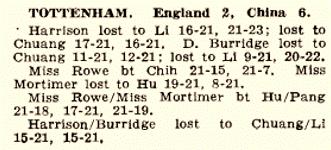

November 26. Travel 100 miles back to London for a match in Tottenham. A similar story, where Rowe scores two wins but China takes the tie 6-2.
Totals for the Tour: China won five matches, drew one. Li won all 11 of his singles matches, and Chuang was 9-1. By contrast, the English women took 11 of 18 matches from the Chinese. Rowe won all six of her singles and doubles matches.
Afterwards, Ian Harrison reflected on the experience in Table Tennis...

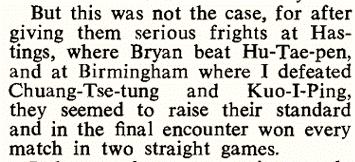

November 27, 1959 The Chinese leave England for the Scandinavian Open. Chuang wins singles and partners with Li for doubles victory. China wins the team event over the Czechs, Hungary and Sweden.
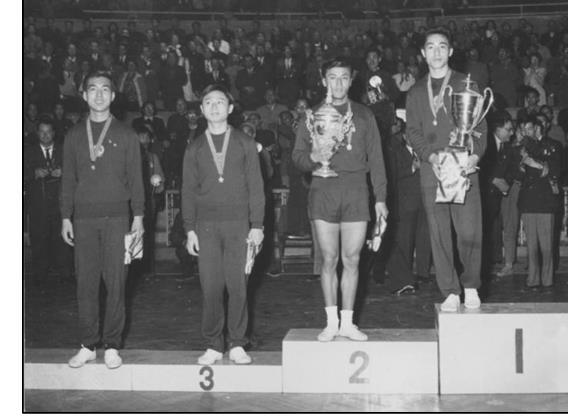

In Issue 1 of Table Tennis Collector, thirty years ago, Gerald Gurney wrote an interesting biography of Louis Wain, the very popular British commercial artist of the early 1900s, and showed some of Wain’s cat ping pong artwork. He promised more in future issues. We have finally succeeded in herding those cats back together again to fulfill that promise.
Here is the four-page Wain Ping-Pong calendar, which was 12 x 9 inches and published by Raphael Tuck & Sons, Ltd. In late 1902...
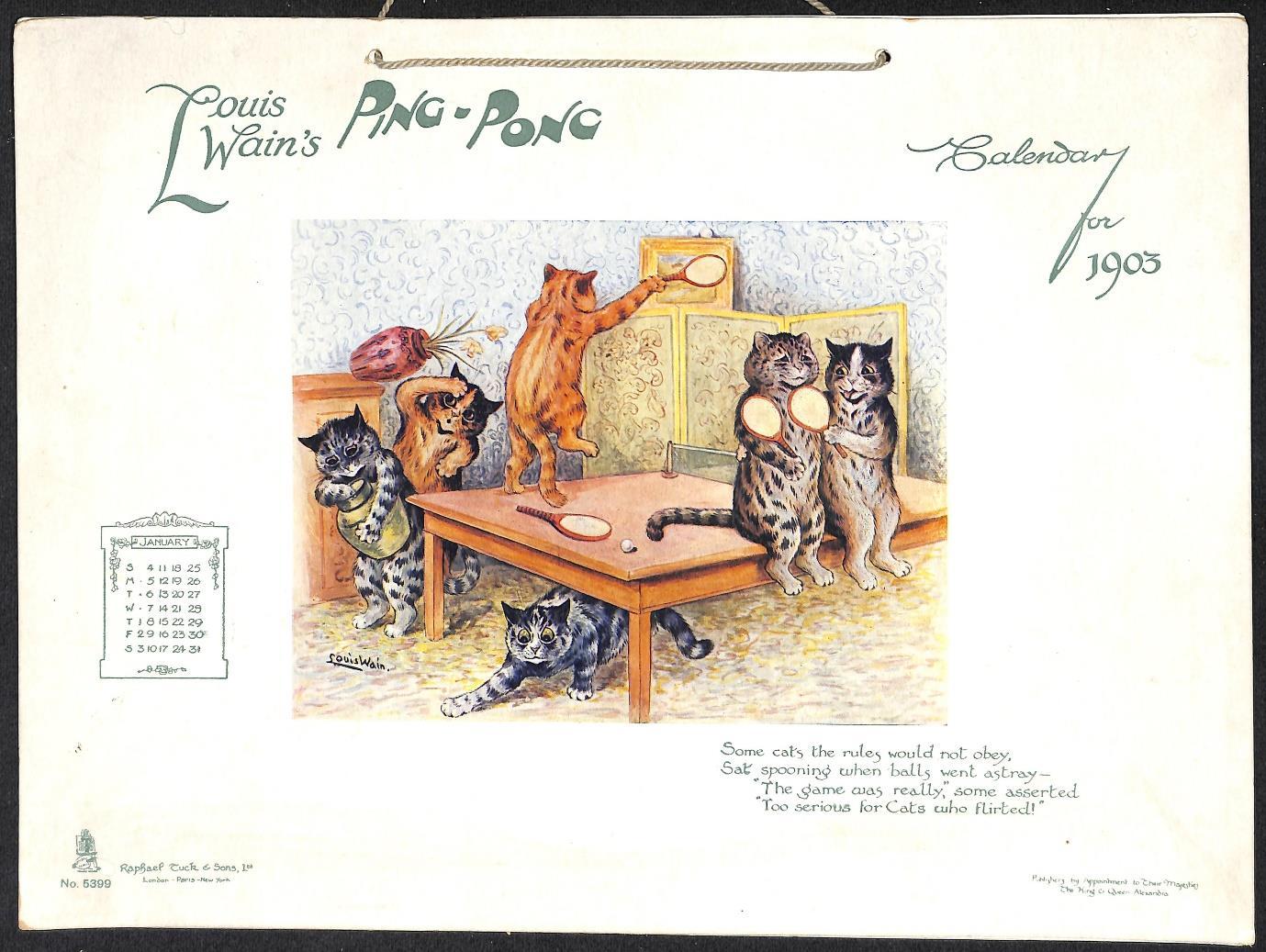


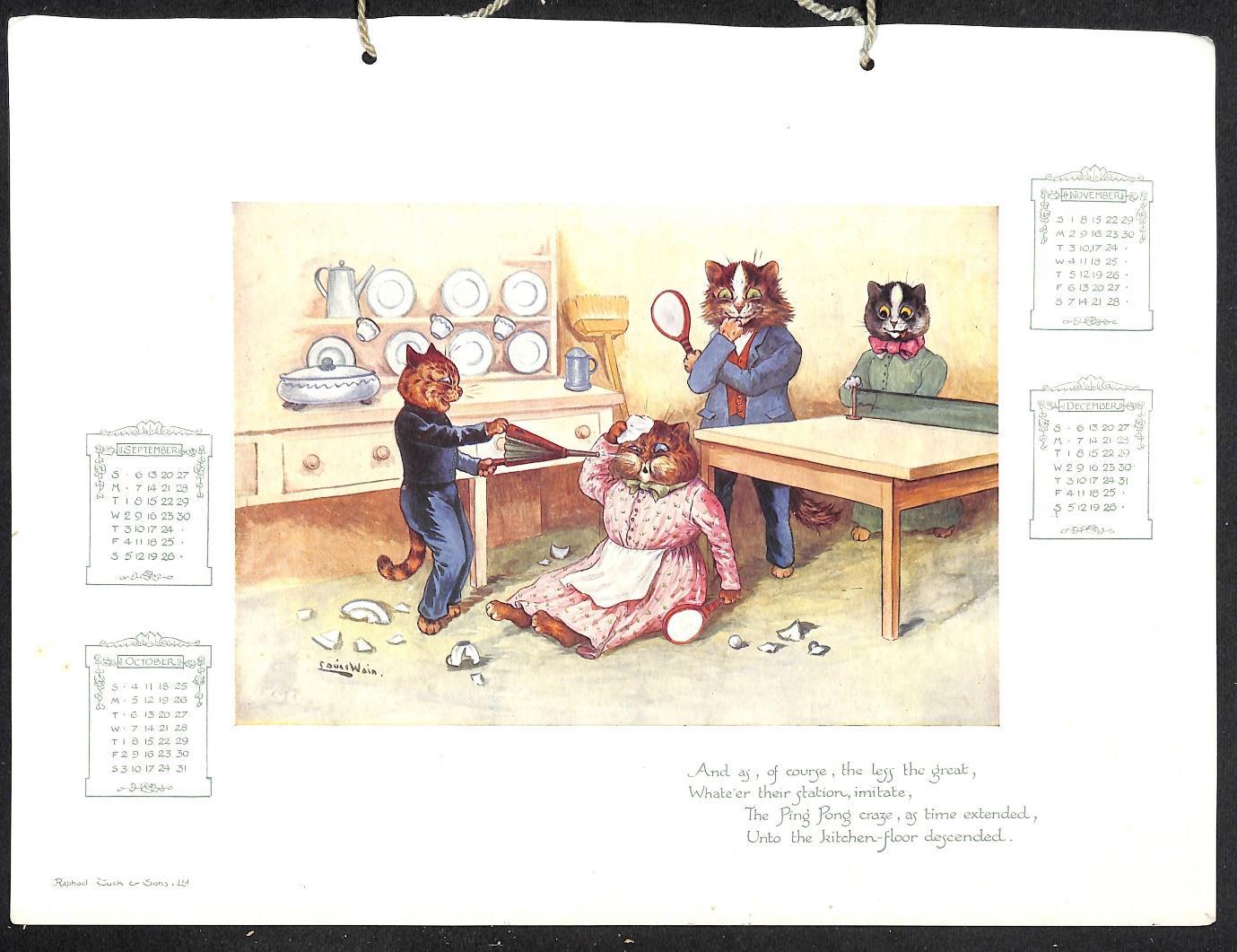
By the way, Tuck published another 1903 ping pong calendar, drawn by Hilda Cowham. Her creations are shown in TTC Issue 37, page 11.
A few months before the calendars, Tuck published ping pong books that first showed these calendar drawings plus additional drawings. Here are 1902 reviews from English publications and an ad from a USA newspaper...

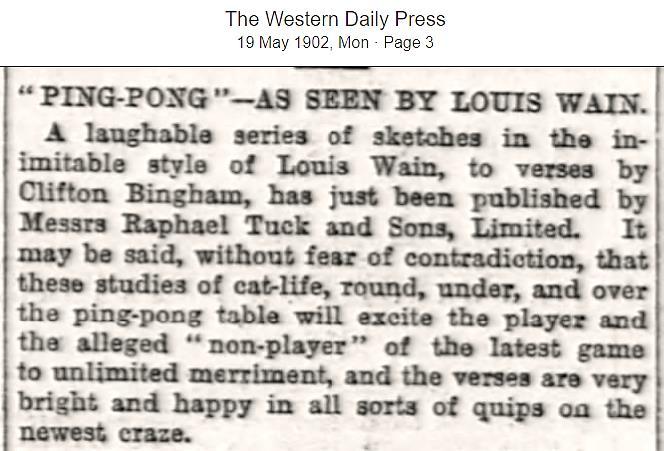
From The Sketch, June 4, 1902…
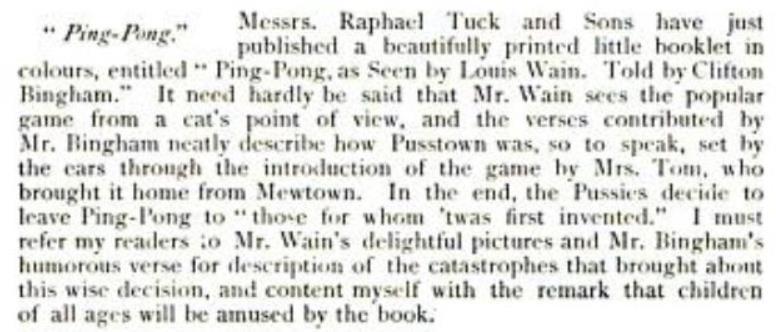
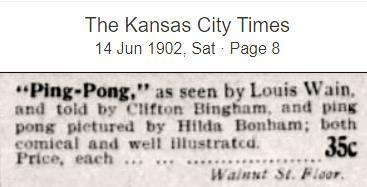
Here’s part of the Wain book, which had 16 pages…
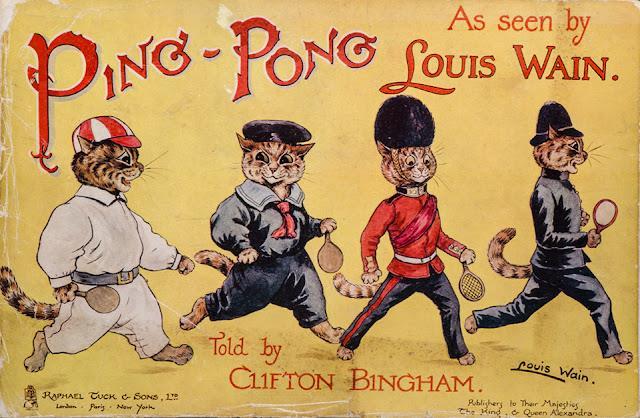
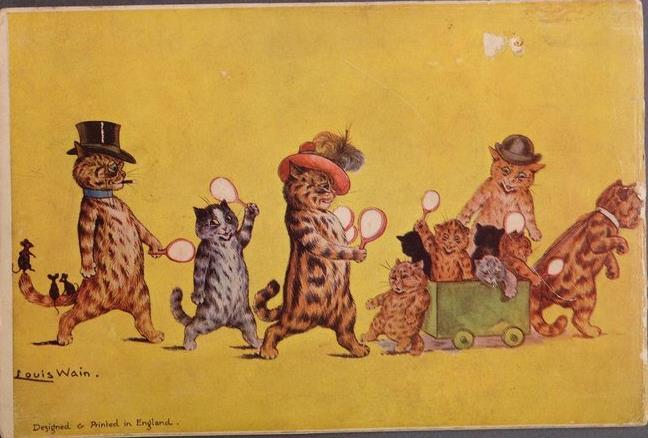
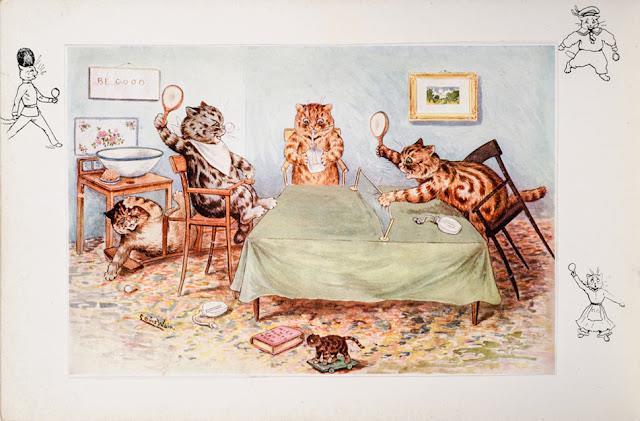


In time, the Wain cats were sighing “I’d rather play mouse” …
….and then learned tennis and chess for the 1904 Wain calendars...


...before moving on to the new craze, Diabolo, in 1907.
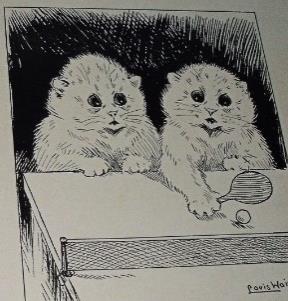

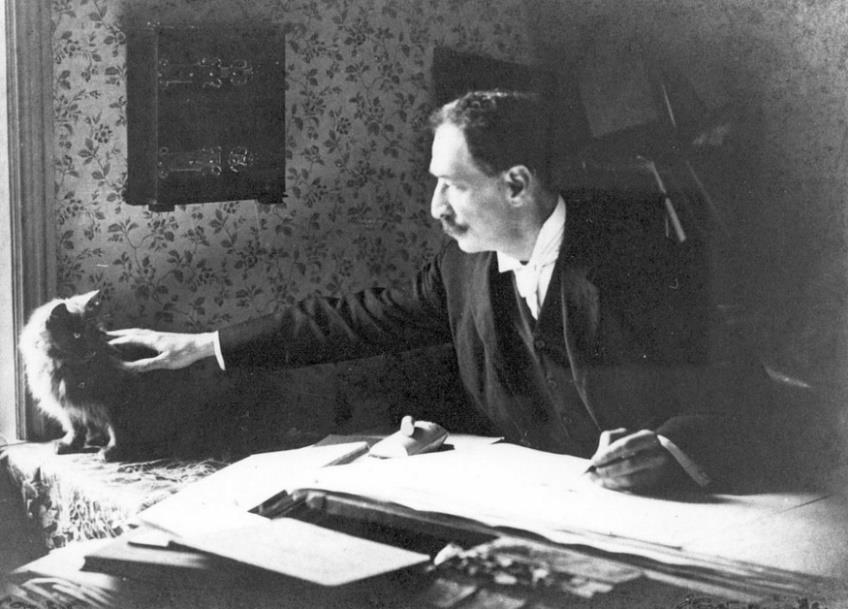

Wain (1860-1939) illustrated hundreds of children’s books and other publications. His life is portrayed by actor Benedict Cumberbatch (above right) in the 2021 movie The Electrical Life of Louis Wain. No ping pong is shown, but I recommend seeing it anyway.
In the 1920s, Wales did not have the world’s top players, but they did have good players who had some success in the early international matches. In describing those successes, we will also address the mysterious 1927 India vs. Wales bat that editor Gerald Gurney showed in Issue 25, page 6.
The 1923 English team photo has been shown twice in Table Tennis Collector, so it is past time to finally show the corresponding photo for the Welsh team, below, taken on the same occasion.


The newspaper did not provide names for the photo, but below are five of the team members. Andrews was their number 1. Weaver was captain. Windsor and Schiele were reserves.

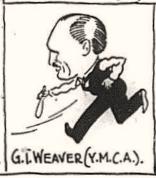
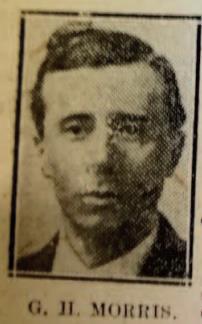
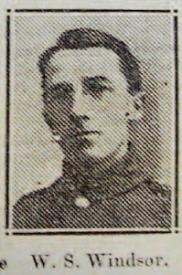

Wales lost to England in 1923, 1924 and 1925. In a 1936 article titled “The Revival of Table Tennis,” published in several English newspapers, W.A. Tucker wrote, “In 1925, I gained my international badge against Wales. Most of us were then using rubber, but the Welsh players would not change from wood. I had a very easy passage in that match, and an extract from a Welsh paper informed me that my rubber racket was the cause of this.”
The 1926 match took place in Cardiff, where many people had to be turned away from the sold-out event. For some of the Welsh players, it was the first time playing against rubber bats, which were not allowed in Wales, and they had problems with the service spin. At the halfway point of the 10game match, after Percy Bromfield, the English captain, had beaten the Welsh leader M.E. Lewis 5035, Wales was a staggering 50 points behind. With three games to go, England still led by 45. In Game 8 ...well, I’ll let the Merthyr Express of January 23, 1926, tell the rest of the story...

“Try how and as he liked, Hookins [England] could not hold Mossford’s slams,” and lost 50-30. Next up for Wales, “Matthews soon had the measure of his man, and proved that wood rackets are superior to rubber rackets. Nye was not given a chance to settle down, for Matthews kept him on the run, and varied his play with some long and short balls, which puzzled Nye.” The 50-29 win brought Wales to within four points of England with one game to go. Solly Stone of Cardiff faced C.G. Mase of London. “This game will live long in the memory of those fortunate enough to witness it...Mase, who, by the way, is deaf and dumb, fought a very hard game...He kept Stone on the run, but that was just what Stone liked...There were times when spectators stood in their excitement...As soon as Stone made the winning point [50-38], the crowd cheered itself hoarse, and Stone came in for a good dose of hugging by the crowd.” The post-match reception featured speeches
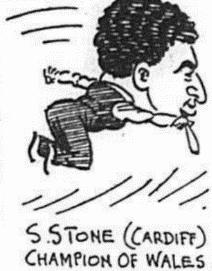
“Mr. Bromfield remarked that when he left London for Wales he had an old speech ready, but that night he had to get another speech. He hoped Wales would persevere with the game, and if any team deserved to win it was the Welsh team, for they were ‘stickers’ from start to finish. Thus ended a happy evening, and the Welsh and English National Anthems were sung in conclusion.” At right is the box score from the Western Mail
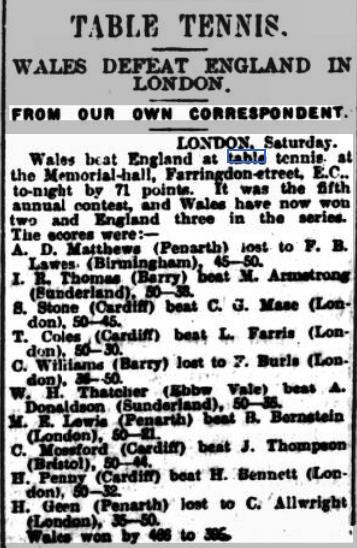
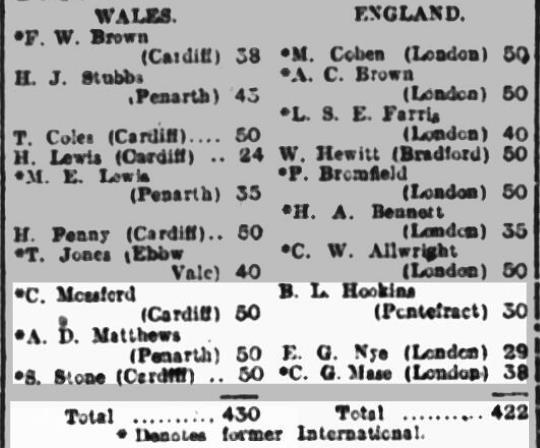
The following year’s match returned to London, with Ivor Montagu as referee. It was not close Wales won by 71 points, as shown at left, Western Mail, January 17, 1927.
Let’s next answer the questions raised in Issue 25 about the illegible writing on this bat. The date was March 26, 1927. And yes, it was an official international match at Cardiff versus India.

The Indian team was good, having beaten England 5-4 in December. For that matter, India had beaten Wales 5-4 in the December
Swaythling Cup. Yet this time Wales won easily. For India, only R.G. Suppiah, the 1926 and 1927 English champion, scored a win, over Cyril Mossford 50-45, a match between the two team captains. (We should note that Mossford, 23, had won a bronze medal in doubles at the world championships three months earlier, with Cardiff teammate Hedley Penny, who also by the way was a quarterfinalist in men’s singles.)


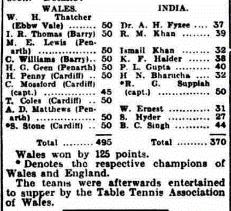

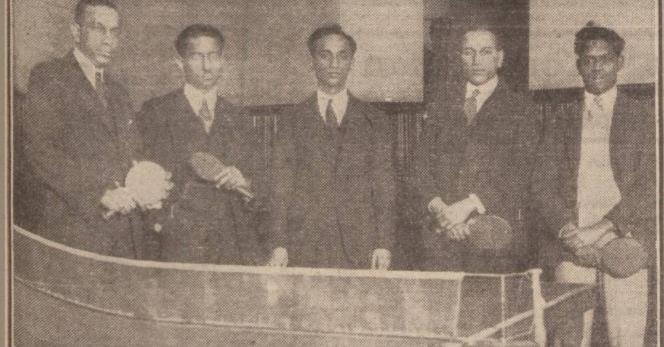
The win over India concluded a second straight successful season for Wales in international matches. But England was out for revenge. At the world championships in January 1928, they fired a warning shot, beating Wales 5-1 in their Swaythling Cup match.
In March, the teams returned to Cardiff to resume their annual clash. Wales took an early 100-57 lead, but the English sent out old reliable Bromfield and the talented new teenagers Fred Perry, Charlie Bull and Adrian Haydon and, well... Dick German’s Cartoon in the South Wales Echo tells the story...
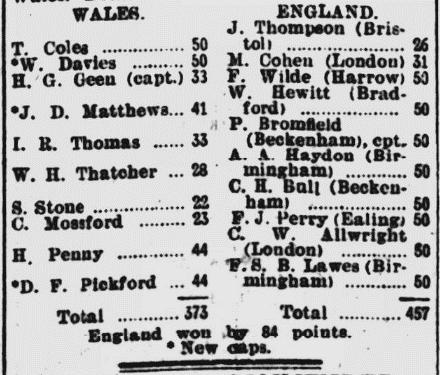

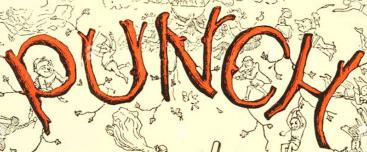
In Issue 30, page 4, our colleague David L. Good produced a listing of 90 ping pong and table tennis mentions in Punch magazine in the years 1900-1905, “based on a perusal of some 5,700 pages...” This was his tally by year...

David did not discuss search methodology, but Punch may not even have been digitized at the time of his study, 2002. I believe he read through every issue, page by page, quite a feat!
Now Punch is fully searchable online, and we find some minor mentions not in David’s list, though his April 24, 1901, items remain the earliest. In 1901, for example, are four more mentions, including this “article” (right), from May 29, 1901, page 409.
I should add that there were also items that David found but that the search engine missed, so it occurs both ways!
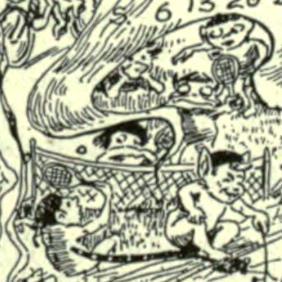
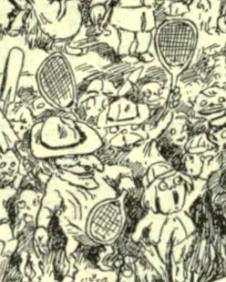

Meanwhile, I would delete from his list the two 1903 illustrations by Thomas Maybank (which David admitted were questionable) as being clearly tennis, not table tennis. At left are details from those, each showing outdoor summertime scenes. 1921..
David asks at the end of his article for a volunteer to tally Punch mentions in the 1920s, when the game made a comeback. I recently did a database search. It turns out that Punch found the game only mildly amusing in the new era. After zero mentions in 1919 and 1920, there were three in 1921, ten in 1922, four in 1923 and then still fewer in ensuing years. See the next page for more examples.


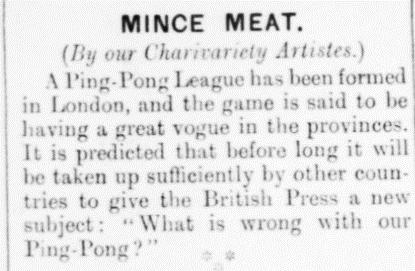


Given a world champion on the front cover of this first issue of Table Tennis History, let’s make it symmetrical by placing world champions on the back cover.
The first known world championships were held in 1926, but I believe this photo, offered recently by a New York eBay seller, predates that by more than twenty years. One suspects, however, that the competition was among a small group of local participants. For that reason, we cannot recognize this as an official world championship.
But we admire the spirit and the trophy.
